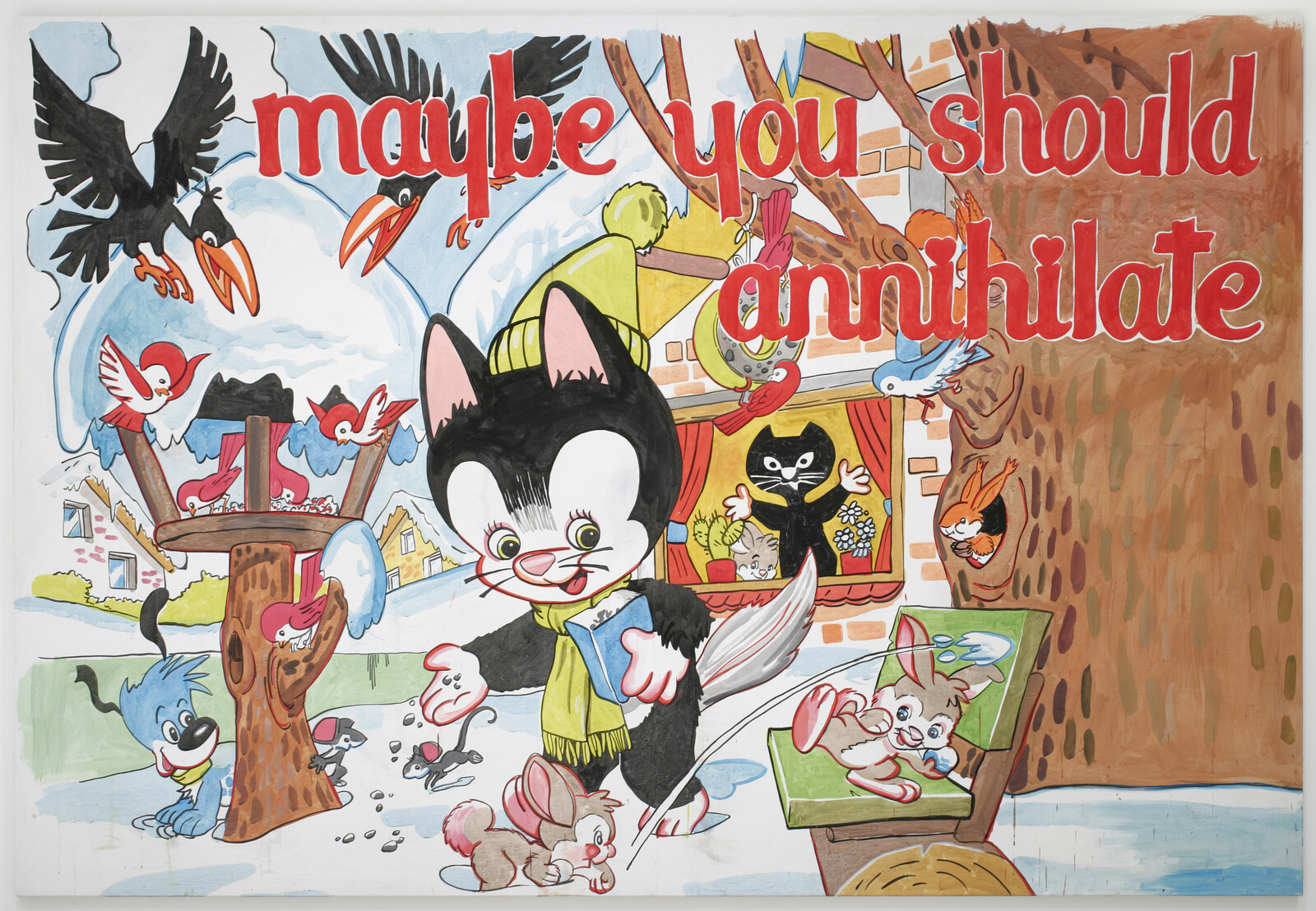SINNMASCHINE
March 31–October 1, 2023
3 Park Dräi Eechelen
L-1499 Luxembourg
Luxembourg
Hours: Tuesday–Sunday 10am–6pm,
Wednesday 10am–9pm
T +352 45 37 85 1
info@mudam.com
Throughout his short but prolific career, Michel Majerus captured the spirit of his time—decades marked by the expansion of globalised consumer culture and digital technology. His large-scale paintings and installations are characterised by the visual sampling and collage of an eclectic repertoire of imagery and text. Borrowing freely from art history, video games, advertising and electronic music, his work resonates with the frenzy of images and information that pervades contemporary society through the ubiquity of the internet. Thus, Majerus transgressed the rules of painting and reinterpreted the pop culture of the 1990s and early 2000s. He used these influences in a way that implied an engagement not only with broader cultural developments, but also with the parameters of artistic practice and reception in a way that is still relevant today.
Majerus’s installations typically explored the growing role of the digital, allowing visitors to walk through and experience emerging visual cultures in an immersive way. SINNMASCHINE [Sense, or Meaning Machine] (1997), the departure point and entrance to the exhibition in the Grand Hall of Mudam, is one of these. Referencing The Man-Machine (1978), the iconic album by German electronic music band Kraftwerk, its industrial metal floor resembles a dance floor on which visitors’ footsteps resonate.
In the manner of a research exhibition, Michel Majerus: SINNMASCHINE illustrates the multiple ways in which Majerus has translated his research into painting, offering a discursive space for visitors to delve into his working methods, artistic reflections and various influences. On a scaffolding structure that refers to the architectures that he himself repeatedly built in a variety of formats, Mudam displays a selection of his multifaceted paintings from diverse phases of his creative career. His library, integrated into the structure, gives a clear indication of his varied but time-typical interests; while his notebooks and collected publications allow for differentiated readings of this artistic practice. In addition, Majerus’s VHS tapes—copied video material from state television, MTV and VIVA recordings to documentaries and feature films—lend a new urgency to the artist’s paintings, adding context and depth to the flatness of most of his works. The juxtaposition of archival material and paintings aims to shift and deepen our current understanding of Majerus’s work, his relationship to art history and the discourses of his time.
A publication based on the symposium that took place at Mudam in November 2022, what looks good today may not look good tomorrow: The Legacy of Michel Majerus will complete this expanded view and will be published in conjunction with the exhibition. This publication is the first volume of a new research-based series initiated to accompany the symposiums proposed as part of Mudam’s programming and will be co-published with Sternberg Press. With contributions by Cory Arcangel, Karen Archey, Motoko Ishibashi, Ingrid Luquet-Gad, Clémentine Proby, Fabian Schöneich, Stephanie Seidel, Bettina Steinbrügge and Sarah Johanna Theurer.
Curators: Bettina Steinbrügge, assisted by Clémentine Proby
Michel Majerus (b. 1967, Esch-sur-Alzette–d. 2002, Niederanven) studied at the State Academy of Fine Arts in Stuttgart before moving to Berlin, where, apart from a one-year stay in Los Angeles, he lived and worked until his untimely death in 2002. His work has been shown in solo exhibitions at KW Institute for Contemporary Art; Kunstverein in Hamburg and Neuer Berliner Kunstverein, among thirteen other museums featuring works from their collections, as part of the Germany-wide exhibition series Michel Majerus 2022. Previous solo presentations include Kunstmuseum Stuttgart (2011); Mudam Luxembourg (2006); Stedelijk Museum, Amsterdam (2005); Kunsthaus Graz (2005); Deichtorhallen Hamburg (2005); Tate Liverpool (2004); Hamburger Bahnhof, Berlin (2003) and Kunsthalle Basel (1996), among others.

